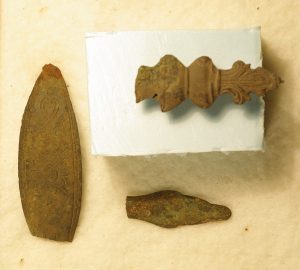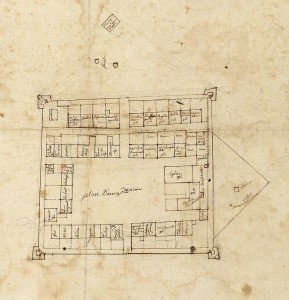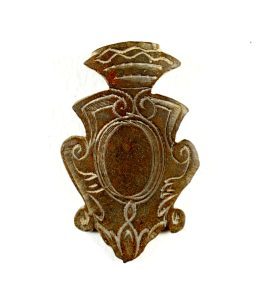
In the years between 1712 and 1720, France was entangled in a long war with the Meskakie Nation in Wisconsin. The area which would later become Michilimackinac became a jumping off point for the troops who were going to go fight in that war. Those forces were made up of a handful of soldiers, French canoe men or voyageurs, and Native Americans led by Louis de La Porte de La Louvigny and Constant Marchand de Lignery. They were to travel separately to the gathering place before heading further west.

Lignery had arrived at Michilimackinac by 1714 under orders to “persuade the savages of Michilimackinac” and to make war with them against the Fox. Unfortunately, by the spring of 1715 those plans to go to Wisconsin were still muddy. Louvigny had been delayed and food and other supplies were not as well-stocked as the Commanding Officer would have liked. In addition, close to the end of the year, there were grumblings of discontent and four voyageurs had left Michilimackinac without Lignery’s consent. In response Lignery had them arrested as deserters. The men were sent to prison in Montreal to wait for their sentences.
On January 13, 1716, Jean-Baptiste Adhémar, royal notary, and Pierre Raimbault, the King’s attorney, began interrogating the four voyageurs. In response to “why he left before the said convoy” and if “he had the commandant’s permission” the twenty-eight-year-old Jean Verge dit Desjardins said that “not being one of the coureurs de bois he did not believe he was absolutely obliged.” Desjardins further argued that he contracted “a sickness in prison” from being wrongfully jailed. LeBoeuf answered to the same question that “he thought he did not do anything wrong in leaving secretly” and that he was “returning from fur trading.” Jean Gautier responded “that he did not hear any king’s order on this topic.” Pierre Monjeau added that he was “obligated by his contract” to obey his master and feared “he would lose his wages.”

In the end, despite their perceived desertion by Lignery, the men were acquitted. Adhémar and Raimbault let the men go but they were to return to Michilimackinac and “place themselves under the orders of the commandant.” The deserters were volunteers, after all, and were probably more interested in trade than fighting in a war.
Once Louvigny arrived at Fort Michilimackinac, Lignery was relieved of his command and criticized for his failure. However, the trouble with the voyageurs still continued under Louvigny. Even when Louvigny went on campaign with his forces, the voyageurs abandoned their post on their return and departure of the Fort.

Despite its rocky beginning, the presence of those early French voyageurs and soldiers became the start of more than 40 years of successful French military occupation at Michilimackinac. The soldiers during that time never ended up fighting in Wisconsin, but instead built the first version of what we now can see as the reconstructed fort and village.
To learn more about the French military at Colonial Michilimackinac and its other great history or to plan your trip, go to mackinacparks.com.









